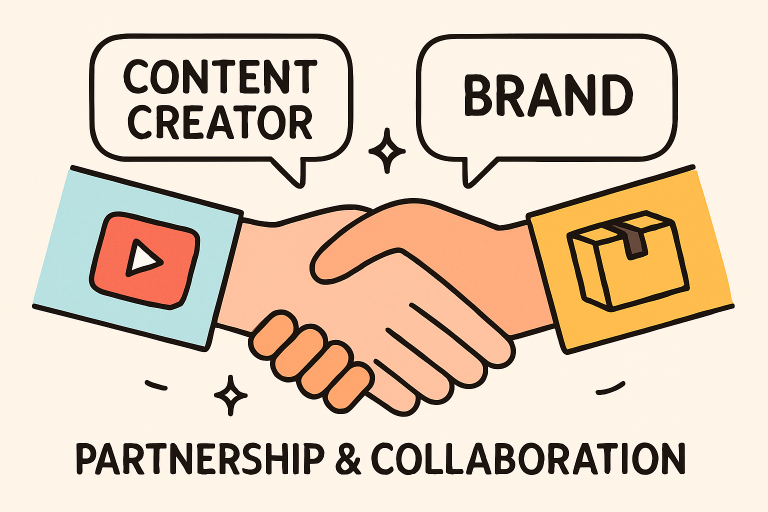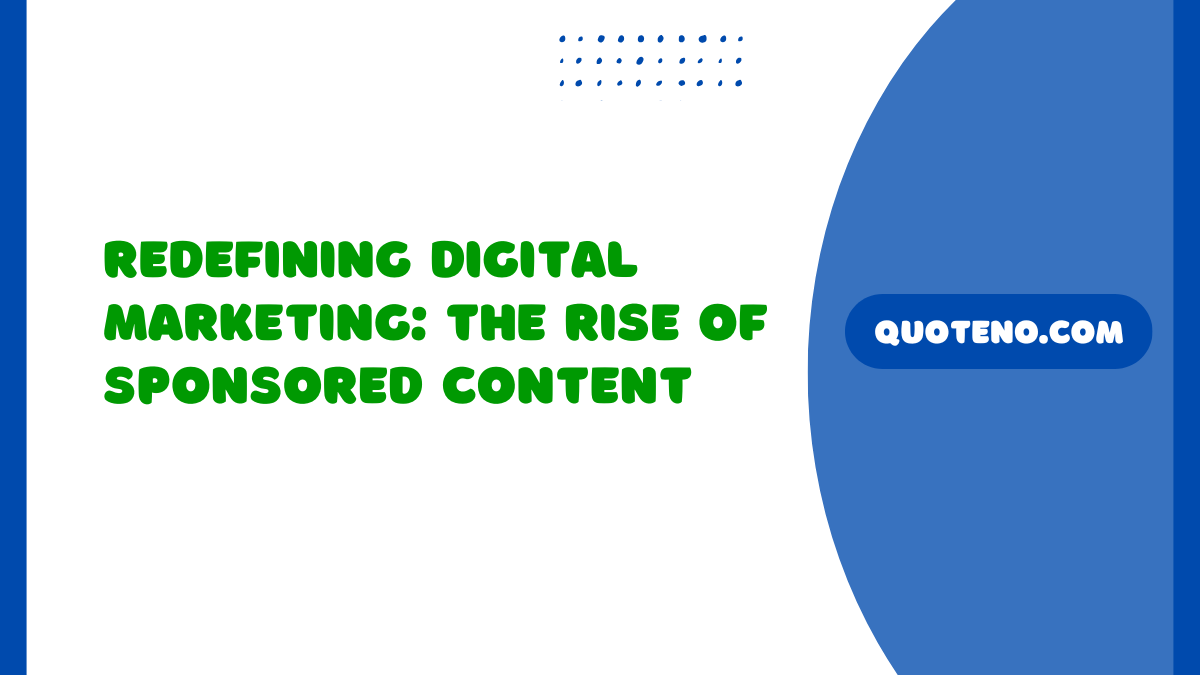Sponsored posts are a form of digital content where a brand partners with a creator, such as a blogger, influencer, or media publisher, to feature its products or services in an authentic and engaging way. Unlike traditional advertising, which interrupts or sits beside content, sponsored posts are integrated within the creator’s own style and voice, making them more relatable and trustworthy to audiences. The difference lies in the nuance—while ads often push a straightforward sales message, sponsored posts blend naturally into a creator’s feed or site, providing value or entertainment while also disclosing the partnership.
When you promote brands with sponsored posts, you unlock new possibilities for both monetization and authentic engagement, benefiting both brands and creators alike. They also encourage long-term audience loyalty, as followers tend to support creators who are transparent about their collaborations. Moreover, this model adapts easily to different platforms, whether it’s social media, blogs, or video content, making it versatile across digital channels. Ultimately, sponsored posts strike a balance between promotion and authenticity, creating a win-win for all parties involved.
Table of Contents
Key Takeaways
- Sponsored posts are transforming how creators and brands work together online.
- This model allows content creators to monetize their platforms and build more authentic relationships with audiences.
- Consumers respond better to transparent and well-integrated collaborations.
- Setting clear guidelines and values leads to effective partnerships.
- Staying updated on regulations and audience preferences is crucial for long-term success.
The Changing Nature of Online Collaboration
Digital partnerships between creators and brands have evolved rapidly over the last decade. Once limited to static banner ads or overt product placements, the landscape now favors genuine, value-driven collaborations. Creators are increasingly selective about the brands they endorse, seeking alignment with their own messaging and audience interests. The rise of influencer advertising shows how influencer partnerships are outpacing more traditional forms of advertising, deeply impacting consumer behaviors and brand reputations. This shift toward mutual value and authenticity has led to more impactful results.
Today’s content collaborations focus on storytelling, long-term partnerships, and creating content that resonates beyond a single campaign. This benefits not only brands and creators, but also the empowered modern consumer who expects transparency and relevance from the media they engage with.
Why Creators Benefit from Sponsored Posts
Sponsored posts provide content creators with sustainable income streams. By partnering with brands that align with their values, creators maintain artistic integrity and avoid alienating their audience. This level of curation ensures that promotional content feels legitimate, leading to better engagement metrics, stronger relationships, and increased credibility. Monetization is just one part of the advantage. The opportunity to select which brands to feature allows creators to champion products, causes, or services they truly believe in. When the collaboration makes sense to both the creator and their followers, trust flourishes—a crucial currency in the digital economy.

The Brand Perspective: Building Trust and Reach
Brands leverage sponsored posts as powerful tools for building trust and expanding reach. By integrating messages into the everyday content of trusted voices, brands tap into pre-existing communities and the credibility those creators have built. Success stories abound, such as smaller businesses rapidly scaling through targeted influencer campaigns, or established companies revitalizing messaging through a new generation of content ambassadors.
Industry data underlines the impact; according to Influencer Marketing Hub, companies are increasingly investing in creator collaborations because of high ROI, sustained engagement, and the ability to build dedicated brand communities. Sponsored posts thus become a cornerstone of modern digital marketing, where word-of-mouth and authenticity reign supreme.
How Transparency Builds Trust with Audiences
Transparency is critical in content collaborations. Honest disclosure of paid partnerships is a legal requirement in many regions and a best practice everywhere. The Federal Trade Commission’s guidelines provide clear direction for creators, detailing when and how to disclose sponsorships to their audiences. Transparent communication doesn’t just meet legal obligations—it also reinforces audience trust. Consumers appreciate when creators are upfront about partnerships, viewing such collaborations as honest and contextual rather than deceptive or forced. Brands and creators that prioritize openness see greater loyalty, better engagement, and improved long-term reputation.
Challenges and Best Practices
Even the most aligned partnerships come with challenges. Striking the right balance between authenticity, audience expectations, and the sponsor’s objectives can be difficult. Brands may hope for highly promotional messaging, while creators must protect their voice and creative control. There is also the danger of audience fatigue if sponsored posts feel repetitive or insincere. Best practices for successful collaborations include setting clear guidelines from the outset, prioritizing content quality over quantity, and incorporating regular feedback. Creators and brands should consistently evaluate their strategies—based on analytics and audience input—to ensure partnerships continually deliver value on both sides.
Future Trends in Sponsored Content
The future of sponsored content is likely to be shaped by rapid technological change and shifting audience expectations. Emerging platforms, such as short-form video, livestream shopping, and even virtual or augmented reality, will open up new formats for collaboration. Artificial intelligence and advanced analytics will help target more personalized and effective campaigns. Audiences will continue to demand greater transparency, diversity in creator selection, and meaningful value in content. Brands and creators who adapt quickly to regulatory shifts, embrace creativity, and prioritize authentic relationships will be best positioned for long-term success in the dynamic collaborative landscape.
Conclusion
Sponsored posts have become far more than a passing trend—they represent the future of how brands and creators connect with audiences in meaningful ways. Blending authentic storytelling with transparent partnerships allows creators to monetize their platforms without sacrificing trust, while brands gain access to engaged communities and long-term loyalty. Success in this space comes from balance: ensuring creative integrity, setting clear expectations, and keeping transparency at the core of every collaboration. As the digital landscape continues evolving with new technologies and shifting consumer preferences, sponsored content will remain a vital strategy for building trust, reach, and sustainable growth for creators and brands.
Frequently Asked Question:
What are sponsored posts?
Sponsored posts are paid content—blogs, social media posts or videos—where a brand works with a creator or influencer to promote their product or service. The creator gets compensation (money, free product, etc.) and publishes content marked as “sponsored” or “paid partnership.”
How do sponsored posts differ from regular ads?
What are the main benefits of using sponsored posts?
They increase brand visibility and reach new audiences.They often produce higher user engagement (likes, comments, shares) because content feels authentic. They can build trust, especially when done transparently.
What rules or ethical guidelines apply to sponsored posts?
- Divorce Annulments Demystified: Facts, Misconceptions, and What to Know - December 8, 2025
- Setting Healthy Boundaries for Better Mental Wellness - November 20, 2025
- Creative Ways to Make Camping Trips Fun for Everyone - November 7, 2025

